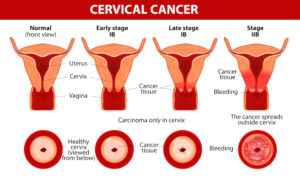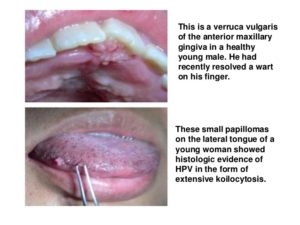
Cervical Cancer. Carcinoma of Cervix. Malignant neoplasm arising from cells in the cervix uteri. Vaginal bleeding. Vector diagram.
What is HPV?
We see many commercials on TV lately that have adolescents or young adults talking about this disease. What is this abbreviation? Human Papillomavirus is its full name. About 79 million Americans are currently infected with HPV. About 14 million people become newly infected each year. HPV is so common that most sexually-active men and women will get at least one type of HPV at some point in their lives.
The CDC (Centers for disease control and prevention) states HPV is the most common sexually transmitted infection (STI), that it is a different virus than HIV and that HPV is so common that nearly all sexually active men and women get it at some point in their lives. CDC all states there are many different types of HPV, some types can cause health problems including genital warts and cancers but there are vaccines that can stop these health problems from happening=PREVENTION.
How is HPV is transmitted from one person to another?
It is a STD so you can get HPV by having vaginal, anal, or even oral sex with someone who has the virus. It is most commonly spread during vaginal or anal sex. HPV can be passed even when an infected person has no signs or symptoms.
Anyone who is sexually active can get HPV, even if you have had sex with only one person or multiple (obviously the more partners you have the higher the chance of getting it). You also can develop symptoms years after you have sex with someone who is infected unfortunately where this makes it hard to know when you first became infected.
What health risks does HPV put people at if they have this diagnosis?
In most cases, HPV goes away on its own and does not cause any health problems. But when HPV does not go away, it can cause health problems like genital warts and cancer.
Genital warts usually appear as a small bump or group of bumps in the genital area. They can be small or large, raised or flat, or shaped like a cauliflower. A healthcare provider can usually diagnose warts by looking at the genital area.
Remember it can cause the BIG C!
HPV can cause cervical and other cancer forms including cancer of the vulva, vagina, penis, or anus. It can also cause cancer in the back of the throat, including the base of the tongue and tonsils.
Cancer often takes years, even decades, to develop after a person gets HPV. The types of HPV that can cause genital warts are not the same as the types of HPV that can cause cancers.
There is no way to know which people who have HPV will develop cancer or other health problems. People with weak immune systems (including individuals with HIV/AIDS) may be less able to fight off HPV and more likely to develop health problems from it.
